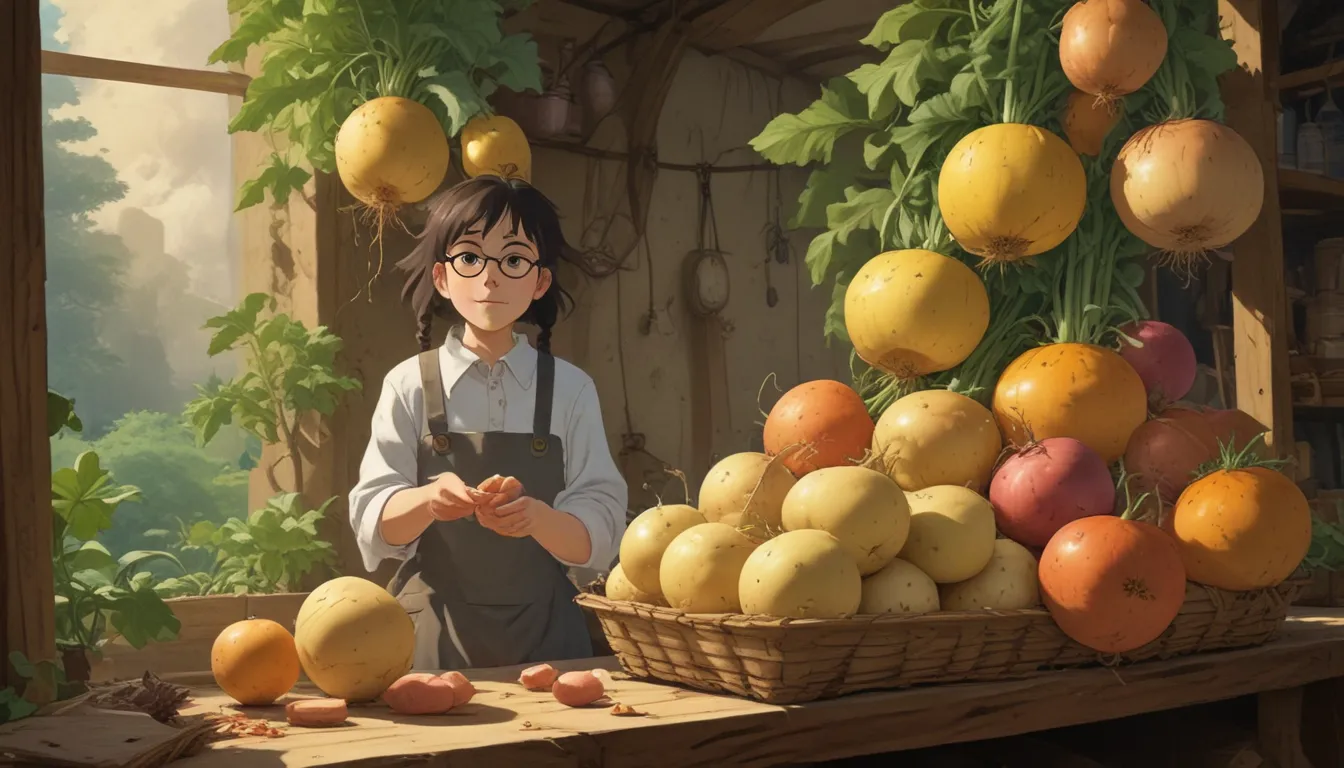A Comprehensive Guide to Harvesting, Storing, and Enjoying Rutabaga

So, you’ve dedicated some space in your garden to grow rutabagas this year – congratulations! It’s an exciting endeavor, and the time has come to reap the rewards of your hard work. Walking through your garden, you can see the greens growing and the bulbs expanding, but when is the perfect time to harvest, and what can you do with all that rutabaga once it’s out of the ground?
In this detailed guide, you will learn everything you need to know about harvesting rutabagas, storing them properly, and delicious ways to prepare and enjoy this versatile vegetable. Whether you’re a seasoned gardener or new to growing produce in your backyard, this article will provide you with valuable insights and tips to make the most of your rutabaga harvest.
What You’ll Learn
- When to Harvest
- How to Harvest
- Storage Requirements and Methods
- Cooking Tips and Recipes
- Get Creative with Homegrown Rutabaga
Let’s dive in and explore the world of rutabagas!
When to Harvest
Rutabagas are typically ready to harvest around 90-110 days after sowing, with the best flavor achieved after a few light frosts. The roots are at their prime when they reach a diameter of 2 to 3 inches – smaller roots are especially tender and succulent. While you can harvest roots up to 4-5 inches in diameter, be cautious not to let them grow too large, as they can become tough and fibrous.
Additionally, the foliage of the rutabaga plant can be harvested as well. You can opt to harvest the leaves along with the roots or harvest young tender greens earlier for optimal taste.
How to Harvest
Ensure the soil is dry when harvesting rutabagas. Carefully lift or pull the roots from the ground, taking care not to bruise or damage them. If the soil is compacted, you can gently use a garden fork to loosen the soil around the vegetables.
When harvesting young leaves, cut the tender outer layer of leaves about an inch above the crown. Avoid cutting too many leaves from a single plant as this could impede root growth. If you choose to harvest roots with the leaves still attached, remove the greens shortly after pulling up the roots, cutting or twisting them off within 1 inch of the crown. Removing the greens before storage will prolong the shelf life of the roots.
Storage Requirements and Methods
Proper storage is crucial to maximize the storage potential of rutabagas. Upon harvest, wipe off excess dirt from each root but refrain from washing them as moisture can lead to mildew and rotting. Inspect each root during the cleaning process and consume any damaged or bruised roots first, as they will not store well.
The greens should be stored in an airtight container or zip-top bag in the refrigerator, washing them just before use. As for the roots, they can be stored using various methods as long as light, temperature, and moisture conditions are met.
Rutabagas should be kept in a dark location to prevent sprouting at a temperature as close to 32°F as possible without freezing, with a high relative humidity of 90-95% to prevent shriveling.
For Storing in the Fridge or Freezer
For refrigerator storage, wrap the roots in a moist cloth or paper towel, place them in perforated plastic bags, and store them in the vegetable crisper drawer. This method will keep the roots fresh for 4 to 5 months.
Alternatively, rutabagas can be frozen for up to a year. Peel and cut them into cubes, blanch in boiling water for 3 minutes to retain flavor, texture, and color, and cool in ice water before packing into freezer bags or containers. Leave some headspace in each container to prevent freezer burn. Another freezing option is to peel, boil, and mash rutabaga before storing them in freezer bags or containers, where they will remain fresh for 6 months to a year.
For Storing in the Garden
Leaving your rutabagas in the ground through the winter and harvesting them as needed is an excellent option due to optimal moisture and light levels, with flavor enhancing in cold temperatures. Insulate the soil to prevent freezing by applying a deep layer of mulch like hay, straw, or leaves over and alongside the rows. Ensure roots stay protected, even under snow, by generously mulching at least 18 inches wide.
Remember to harvest any remaining roots before plants resume growth in the spring, as the rise in temperature and light will trigger a second season of growth. Additionally, leaving a few roots in the ground to produce seeds for a new crop in the summer is an option worth considering for biennial rutabagas.
For Storing in a Root Cellar, Garage, or Basement
Maintain temperatures between 32 and 40°F by storing rutabagas in buckets or wooden crates with damp sawdust, sand, or peat moss. Ensure roots are insulated and separated to allow air circulation by not sealing the container completely. Regularly check for signs of decay and remove any affected rutabagas. With proper storage, roots can last for 4-6 months.
Make a Homemade Root Cellar
In cases where traditional storage methods are impractical, a DIY root cellar can be created with a wooden box or barrel, peat moss or sand, and insulating material like burlap. Layer sand or peat moss in the container, place rutabagas with space for air circulation, cover with burlap sacks filled with more sand or peat moss, bury the box mostly underground, leaving an opening for airflow.
Cooking Tips and Recipes
Rutabagas offer a sweeter flavor than turnips, making them a delightful addition to your culinary creations. Peel and prepare rutabagas similar to turnips by washing, peeling, and enjoying them in various ways, such as mashed with butter and salt, roasted, sauteed, or fried. They can also be consumed raw in salads for a crisp texture or incorporated into soups and stews.
The greens of rutabagas are equally versatile – add them raw to salads or cook them in soups or stews after washing and chopping them. For recipe inspiration, explore autumn-themed dishes featuring rutabagas like roasted root vegetable recipes to bring out their complex sweet and nutty flavors.
Get Creative with Homegrown Rutabaga
Harvesting, storing, and enjoying your rutabaga crop can be an exciting and fulfilling experience. Embrace the versatility of this root vegetable and let your culinary creativity unfold. Experiment with different cooking methods and recipes to savor the unique flavors and textures that rutabagas offer.
Share your favorite storage and cooking tips for rutabagas in the comments below, and keep exploring new ways to enjoy this delightful vegetable.
This article provides a comprehensive guide to harvesting, storing, and enjoying rutabagas, offering valuable insights and tips for maximizing your garden’s yield. Whether you’re a seasoned gardener or new to growing produce, this guide equips you with the knowledge needed to make the most of your rutabaga harvest. Experiment with different cooking methods and recipes to savor the unique flavors and textures that rutabagas offer.
Remember to share your favorite storage and cooking tips for rutabagas in the comments, and keep exploring new ways to enjoy this delightful vegetable.





